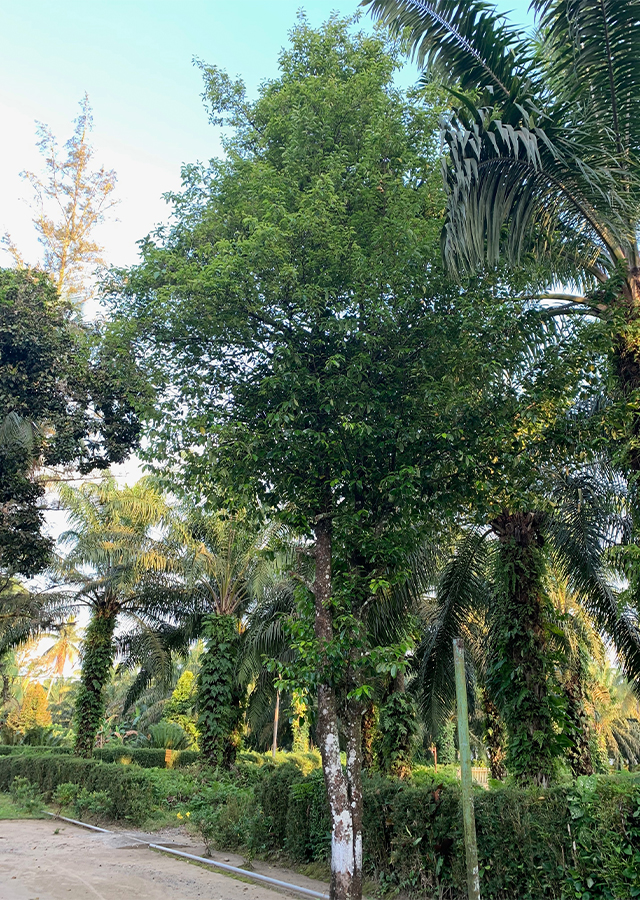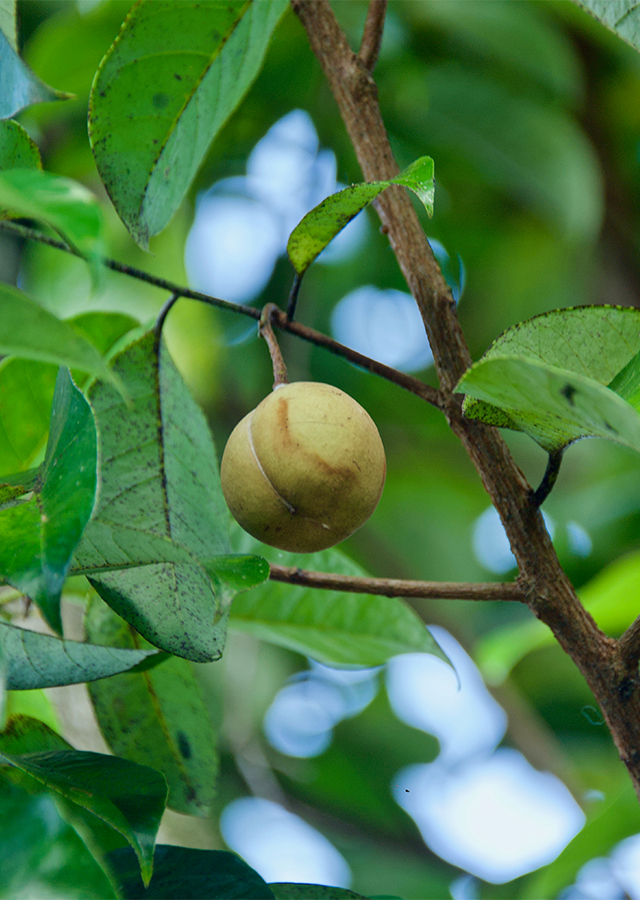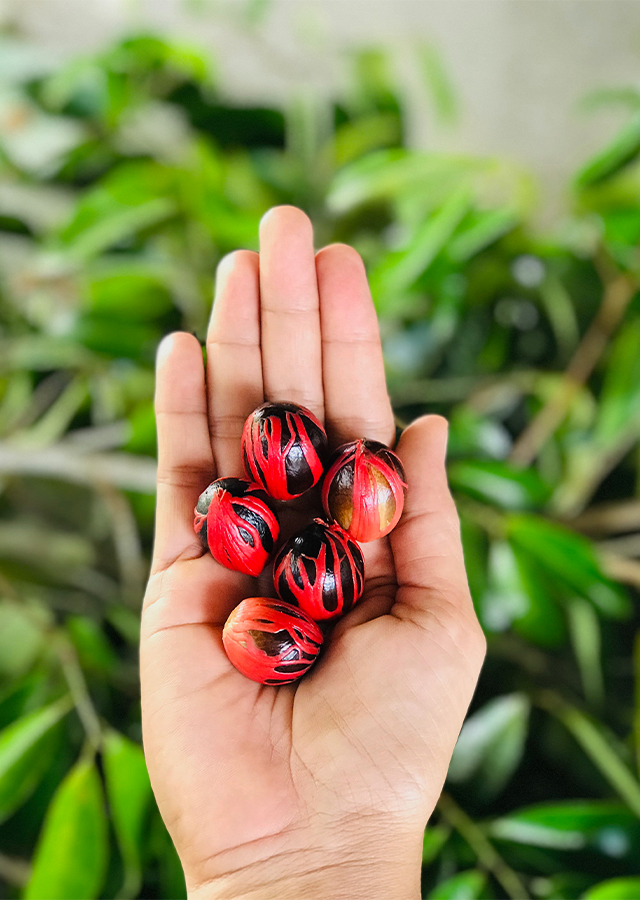Nutmeg
Myristica fragrans Houtt
Myristicaceae
Location in our garden
Orchard



Synonym
Aruana silvestris Burm.f.
Myristica amboinensis Gand.
Myristica aromatica Sw.
Habitus
Trees. A dioecious, aromatic, evergreen tree, usually 5–13 m but can reach heights of 20 m.
Part Used
Seeds
Growing Requirements
Full Sunshine
High Rainfall
Habitat
Forest
Overview
Nutmeg is indigenous to the Moluccas and Banda Islands in Indonesia. The plant is widely cultivated in suitable areas of the tropics as an ornamental and commercially for the two spices it produces, nutmeg and mace. The main areas of production are Indonesia, Sri Lanka and Granada in the West Indies.
Vernacular Names
Buah Pala (Malaysian), Noix de Muscade (French), Muskat Nuss (German), Noce Moscata (Italian), Corteza De La Nuez Moscada (Spanish).
Agroecology
Nutmeg grows wild on rich volcanic soils in lowland tropical rain forests in its indigenous range. Its cultivation as a crop is largely confined to islands in the hot, humid tropics at altitudes up to 4,000 m. Nutmeg prefers a warm and humid tropical climate, with average annual rainfall of 2,000–3,500 mm without any real dry period and average temperatures of 25–30 °C. Therefore, in the tropics the crop can only be grown below 700 m altitude.
Morphology
- Roots - have a superficial root system makes the tree very susceptible to wind damage.
- Stems - the bark exudes a sticky pink or red sap when injured. Twigs are slender, 1–2 mm in diameter towards the top.
- Leaves - alternate, blade elliptical to lanceolate, 5–15 cm × 3–7 cm, aromatic, upper leaf surface shiny dark green lower surface paler green.
- Flowers - fragrant, pale yellow, with a 3- lobed perianth.
- Fruit - subglobose with a long medial groove, drupe-like or berry, 5–8 cm long, yellowish, fleshy, containing one seed and splitting open into two halves when ripe.
- Seeds - broadly ovoid, 2–3 cm long, with a shiny dark brown, hard and stony, furrowed and longitudinally wrinkled shell, surrounded by a laciniate red aril which becomes horny, brittle and a yellowish-brown colour when dried. Kernel containing essential oil.
Cultivation
- Propagation is by seeds or cuttings.
- First harvest after 5 to 8 years; the tree will yield for up to 30 years.
Chemical Constituents
Alkyl benzene derivatives (myristicin, elemicin, safrole), myristic acid, alpha-pinene, terpenes, beta-pinene and trimyristin, essential oil (terpene hydrocarbons (sabinene and pinene), myrcene, phellandrene, camphene, limonene, terpinene, myrcene, pcymene and other terpene derivatives.
Traditional Medicinal Uses
- The seed is a bitter, astringent, spicy herb that acts as a warming, digestive tonic. It controls vomiting and relaxes spasms.
- It is being used to treat stomach ulcers, indigestion, liver disorders, and as emmenagogue, nervine, diuretic, diaphoretic, and aphrodisiac.
- It has antioxidant, anti-microbial, anti-cancer, anti-inflammatory, anti-ulcerogenic, neuroprotective, hepatoprotective properties.
- Nutmeg and/or the mace is used to treat bloating, stomach cramps and diarrhoea. It is also used for catarrh of the respiratory tract.
- Nutmeg oil is applied externally to relieve aches and pains.
- In Brazil, hot water extract of the dried seed is taken orally to treat hypertension or to induce diuresis.
- Externally, the seed is used to treat toothache, rheumatic and abdominal pains (including labour pains).
Part Used
Reference Sources
- Flach, M. & Tjeenk Willink, M., 1999. Myristica fragrans Houtt.. In: de Guzman, C.C. and Siemonsma, J.S. (Editors): Plant Resources of South-East Asia No 13: Spices. PROSEA Foundation, Bogor, Indonesia. Database record: prota4u.org/prosea.

